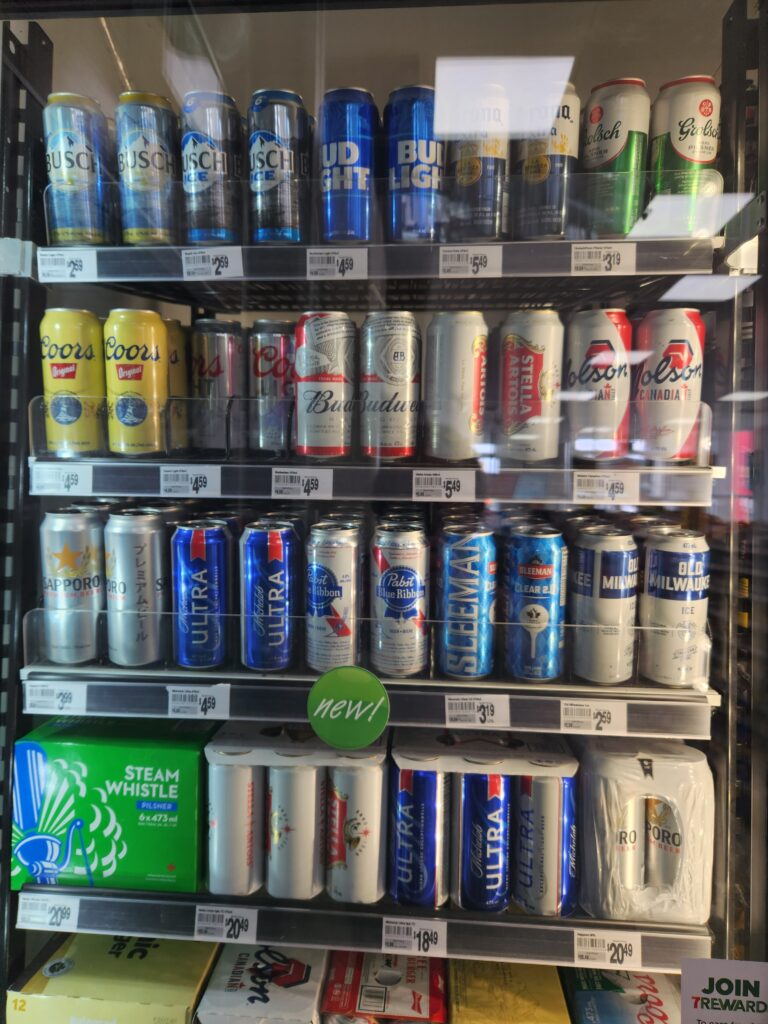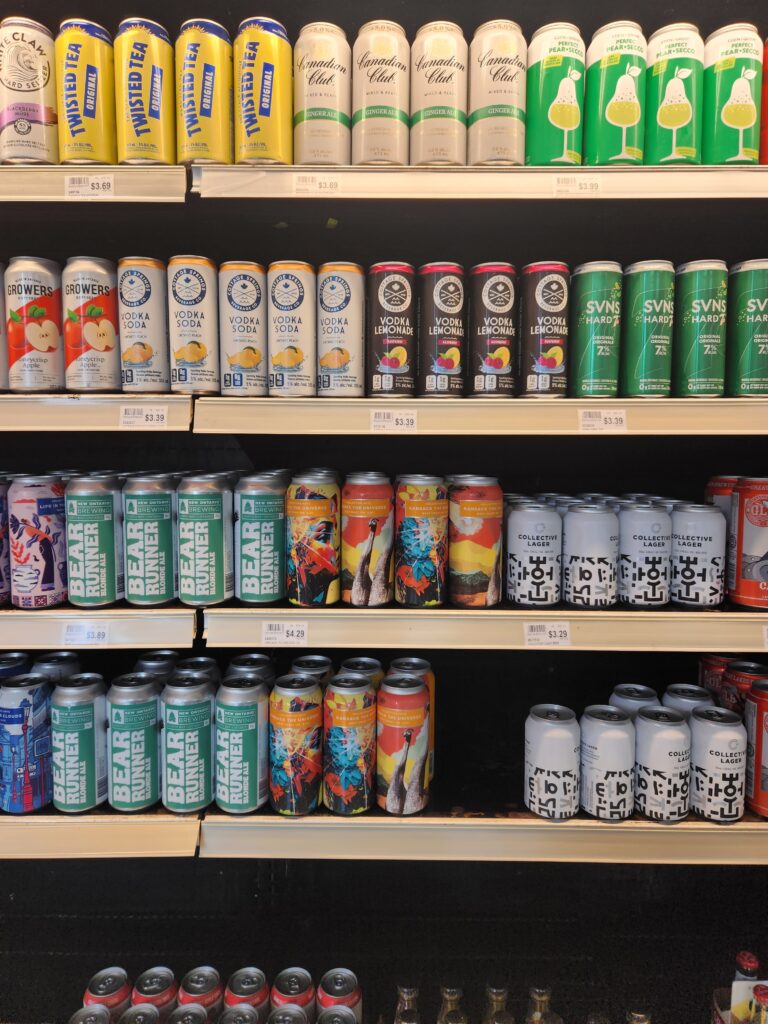It’s a really interesting time for the brewing industry in Ontario, and it’s one of those moments that prompts some re-evaluation. Josh Rubin called me the other day from the Toronto Star to ask how long I thought The Beer Store would remain in business, pointing out that there are drop dead dates for the number of stores they must continue to operate on a contractual basis.
A hundred years is a good long run.
When we wrote the second edition of the Ontario Craft Beer Guide, the opening section, which I am assuming most people skipped past, dealt with the concept of eras of activity within Ontario’s Craft Beer segment. Basically 1984 to 1993, 1993 to 2007, 2007 to 2016. You might not be terribly surprised to learn that these eras have less to do with beer as a beverage and more to do with how it’s retailed.
The first period was marked by the initial wave of craft breweries and brewpubs opening across the province. The second specifically refers to the advent of President’s Choice entering the market with 3% market share and the beginning of Brew On Premise businesses. The third reflects the Ontario Craft Brewers getting their act together as a lobbying group and achieving some concessions on excise. The fourth, which was just beginning in October 2015 as the book was being finished, had to do with The Beer Store, the Master Framework Agreement, and grocery store sales. It was momentous enough that the CBC hired me to do live reporting from the Leslie street location of Loblaws.
Well, a fifth era started on October 31st. Welcome to the future.
As I was casting about trying to figure out how to write about the implementation of the Ford government’s plan to speed up liberalization of alcohol sales in the province, I found myself trying to apply familiar rules to the new paradigm and realized that I probably can’t. A lot of my analysis over the years has had to do with value brand beers.
If you’ve been following me for a while, you might have wondered why I seem obsessed with that as a concept given that I don’t really drink stuff from that category. The answer is that the price of say, Westmalle Tripel, doesn’t matter to the average joe. Beer is a volume business and pretty much always has been, and that means, especially from a demographic standpoint, that people who consume a lot of beer tend to go for value brands in large package sizes.
Because the value brands had a price floor up until 2018 and because the large brewers mostly moved in lock step on their pricing of 24’s of value brands, it was a reliable indicator of increased input costs and outside market forces. Even after 2018, Molson, Labatt, Sapporo, and Waterloo pretty largely didn’t compete in the segment despite the fact that they had the opportunity.
Additionally, and I didn’t figure this out until I did a little analysis this week, it did have the effect of keeping the number of servings of alcohol relatively static from a societal and control standpoint. Despite the 16 dollar increase in price since 2012, minimum wage kept up. People have basically been able to afford between eight and nine value brand beers per hour of minimum wage work on an indefinite basis.
For a number of reasons, I find myself having to abandon this framework.
Demographically, your youngest Boomer is now 60. They’re not buying beer in quantity anymore. Intrinsically, there’s a switch to spirits or wine. Maybe they’re still drinking beer, and maybe it’s the same beer they liked in 1994, but they’re probably not buying a case of it a week.
The decline in volume is significant and I think it’s borne out by Beer Canada’s volume numbers.
Speaking of cases, they’re not really a thing anymore. Yes, there are people buying beer in bottles, but the shift to cans has made a real dent. Beer Canada reckons that in 2023 we got to 75% cans in the market, which is up from 40% in 2014. Bottles count for 16% and dwindling. Without the Molson/Labatt shared 341ml bottle float, there’s no reason for The Beer Store to exist.
Finally, without the necessity of collaborating for the purposes of the bottle float, the large brewers are no longer moving in lock step on value brand pricing. Waterloo continues to pump out Laker at $42.52 a case. Molson’s legacy brands like Carling and Molson Dry sit around $43.97. Sapporo and Moosehead seem to have chosen to sit at $44.76. Labatt Blue is at $45.10. Molson Export is at the top of the range at $45.89. None of this seems extraordinary, but they’re actually competing with each other for the first time that I can remember.
It doesn’t seem groundbreaking, but any reasonable analysis of the beer industry in Ontario up until this point in time had to take into account the fact that the largest brewers in the province weren’t really properly competing with each other. They shared 450 retail stores that they owned and shared an enormous float of bottles and kegs as a result. Yes, they had sales reps who would walk around handing out hockey tickets to sell kegs, but that’s like 10% of the market.
All of the activity surrounding the Master Framework Agreement has been about consolidating the remaining 90%. When you see articles about how much the LCBO is going to lose to convenience and grocery in the short term on an annual profit basis, it’s important to remember that the revenue and profits go up in the long term for the province of Ontario instead of into the pockets of large multinational corporations. The decision to do it a year early for $225 million doesn’t make a lot of sense to me, but then a lot of things don’t.
Basically, with the LCBO as wholesaler, the large breweries are more or less forced to compete with each other in about 850 grocery stores and 4200 convenience stores instead of forcing people to come to them. Also, while the LCBO makes their own markup as wholesaler, filling the province’s coffers, retailers dip their beaks with their own markup.
So how do you quantify that? What reasonable index of value can you possibly have when the same product has dozens of potential price points?
Make no mistake. As The Beer Store shutters locations, there’s very little call for some of the more obscure products the large brewers make to continue to exist. Does the world really need Carling Light when Keystone Light exists? Does Old Vienna mean anything to people outside Chatham-Kent and Windsor? Does Labatt regret sending one REALLY EFFECTIVE sales rep to Thunder Bay in the 1990’s to sell Crystal? Whoever that was, they’re legend.
You’re going to get consolidation of products. You’re going to get less choice, at least initially. The convenience and grocery and big box retail situation has less patience for variety and more desire for expedience than The Beer Store did. The new paradigm is about choice, but it’s largely about choosing how much you’re going to pay for a single product.
I’ve got to gather a little more data, but I’ll walk you through it next time when we ask the question, “How Much Is That Lager In The Window?”


Love the tbay/Crystal call out. Who knew that handing free Crystal 6-pack vouchers at the grain elevators would create a culture around a brand.
Bro did a REAL GOOD job.
I’d be interested to see some discussion over that consolidation of products but from the craft beer perspective. Costco is selling Juicy Ass, Steam Whistle, Lug Tread and a Muskoka Variety Pack – literally the top selling SKUs in the province. Circle K is doing similar.
The move of beer into convenience and (more) grocery really isn’t benefiting most small craft brewers and the death of TBS may very well hurt them. I know Dougie (and probably most average Canadians) don’t care but it’s hard to see this as a net positive for small Ontario craft breweries.
Sort of agree with you. I’ve got several more pieces planned about the knock on effects of this kind of thing including pricing and variety.
Pingback: The “It’s Not Funny At All Out There” Edition Of The Beery News Notes… – A Good Beer Blog - Money Ban